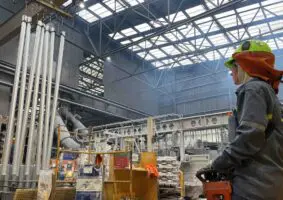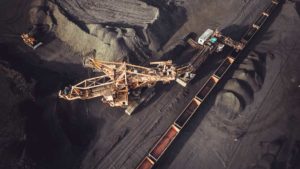The sunshine state is at the precipice of transforming from a legacy coal and gas petrostate to a renewable energy superpower. It is in the process of unleashing its once-in-a-century opportunity to lead the world in exporting decarbonised critical minerals and metals key to the global energy transition.
As we find in our new CEF report, Queensland’s nation-leading investment into transmission, large-scale low-cost renewable energy and Consumer Energy Resources (CER) is crowding-in a tidal wave of public and private capital. Off the back of the state’s game-changing Energy and Jobs Plan, this is turbocharging the energy transition, reducing reliance on expensive, polluting fossil fuels and slashing household and commercial energy bills. And it is driving Queensland’s pivot to embrace its economic future as a zero-emissions energy, employment, trade and investment leader.
While coal-fired power plants supplied more than enough energy to supply the state’s demand 20 years ago, and coal still dominates its energy mix today, accounting for 67% of demand in the December 2023 half, the epic speed of Queensland’s transformation means it is on track to retire its coal fleet by 2035 and deliver its renewables target of 80% by 2035.
This ambition is underpinned by its Clean Economy Jobs Bill tabled in parliament last week, which targets a 75% emissions reduction by 2035, a major advance on the existing weak 30% by 2030 target.
The policy architecture for the state’s transition is the $62bn September 2022 Energy and Jobs Plan, a transformational climate, energy and future industries blueprint designed to eliminate the state’s reliance on fossil fuels and position it for the rapidly emerging net-zero economy. This landmark initiative has created a monumental market signal for private investment, galvanizing economic activity and jobs growth across the state.
For example, as part of the 2023-24 budget, the Government announced a massive $19bn in public capital investment over 4-years to construct and deploy new wind, solar, storage and transmission capacity.
A significant quantum of public financing is being directed into large-scale pumped hydro storage projects and transmission networks, including the ~1000km transmission highway CopperString 2032. This is the largest economic development project in north Queensland to date, and the key to unlocking the world-leading North West Minerals Province, as it connects regional communities and renewable energy resources to the grid.
Whilst clean grid infrastructure projects of this scale are not commercially viable in isolation, the state government’s capital investment is the key enabler. It has facilitated massive follow-on investment from private capital, catalysed momentum, and built investor confidence in the government’s ongoing commitment to underwriting decarbonisation.
This in turn will enable massive investments in zero-emissions future industries, such as critical minerals, driving exports, regional employment and investment, as a flood of firmed renewables slashes industrial and residential energy bills.
Alongside utility scale renewables, consumer energy resources – rooftop solar PV, behind-the-meter battery storage, EVs, and heat pump water heaters – are also key, and Queensland is leveraging its competitive advantage on this front at speed and scale. CER is fast to deploy, eliminating the wait times for the construction of utility-scale renewables and storage, as well as scalable and cost-competitive.
Queensland is the rooftop solar capital of the world. By the end of 2023, Queensland had 6 gigawatts (GW) of solar capacity across more than 1 million rooftops (for comparison the current total National Energy Market capacity including renewables and non-renewables is 64GW). The state added 1.2GW of solar capacity in the year, half of which was from residential arrays. An estimated 46% of dwellings across Queensland are now equipped with rooftop solar, according to the Australian PV Institute. CER gives households agency and equity into the national electricity market, as well as providing critical security and stability services to the grid.
Critically, as cost of living pressures dominate public discourse and impact consumers everywhere, deflationary renewables remain the cheapest form of energy. The price for rooftop solar in Queensland has halved in the past decade, as lithium-ion cells for batteries have seen cost falls of more than 90%. Reduced exposure to fossil fuel prices and increased renewables penetration has seen Queensland wholesale electricity prices drop 38% to $79/megawatt hour (MWh) in the fourth quarter of 2023.
Value is also generated in avoiding the environmental and financial costs of climate-driven extreme weather disasters – costs ‘socialised’ onto all in the form of increased insurance premiums or uninsurability. In Australia, the 2022 east coast floods are the costliest insured national event to date, resulting in total insured losses reaching $7.17bn in 2022. The sunshine state now has the highest estimated mean premiums for floods, and second highest for storm and cyclone insurance.
As the state tackles climate change, progressive, courageous and ambitious energy policy in Queensland is helping to unlock finance for the transition and slash consumers’ power bills. For example Queensland leveraged its multibillion dollar revenue bonanza from an increase in coal royalties to provide Australia’s most generous energy bill rebates, and to fund its renewables infrastructure surge. Its recent announcement of up to $4,000 for residential batteries is another case in point – part of a coordinated plan to put permanent downward pressure on energy bills as it decarbonises its energy system.
Queensland’s transformation has wider implications for national transition. It supports our national emissions reduction and renewables targets, including Federal Energy Minister Chris Bowen’s ambitious 82% renewables by 2030 target and beyond.
With Queensland as a case study, the onus is now on the federal government to increase the ambition of its decarbonisation policy and investment settings, and the private capital will flow, at massive scale, to speed our national transition to the permanent benefit of all Australians.








